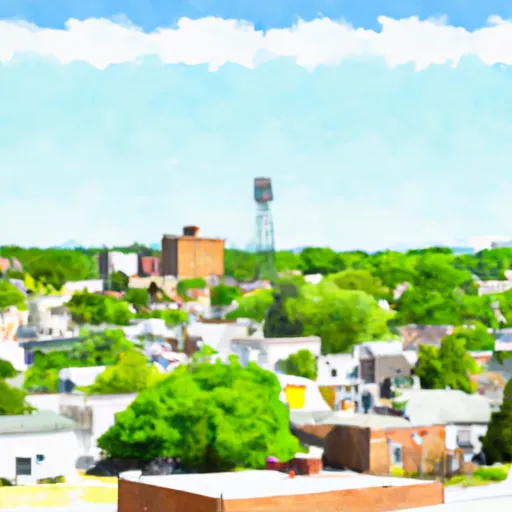-
 Snoflo Premium
Snoflo Premium
Get unlimited access to all our content
With no Ad interruptions! - Start Your Free Trial Login with existing account
Independence
Eden Index
Climate
8.3
•
Recreation
3.7
•
Community
2.0
•
Safeguard
5.1/10

Independence, Kansas is a vibrant city located in Montgomery County in the southeastern part of the state. The climate in Independence is characterized by hot summers and cool winters. Summers are typically hot and humid, with temperatures ranging from the mid-80s to low 90s Fahrenheit. Winters are relatively mild, with temperatures averaging between the mid-30s to mid-40s Fahrenheit.
The hydrology of Independence is influenced by the Verdigris River, which flows through the city. This river provides opportunities for various water activities, including fishing, boating, and kayaking. The river is home to a diverse range of fish species, such as catfish, bass, and crappie, attracting avid anglers.
Additionally, Independence boasts several outdoor recreation opportunities. Elk City Lake, located just a short drive from the city, offers camping, hiking, swimming, and picnicking facilities. Visitors can explore the Elk City State Park, which features scenic trails, wildlife viewing, and designated hunting areas. Moreover, the Montgomery County State Lake provides fishing, boating, and camping options for outdoor enthusiasts.
Overall, Independence, Kansas offers a pleasant climate, a scenic river, and numerous outdoor activities, making it an ideal destination for nature lovers and adventure seekers.
What is the Eden Index?
The Snoflo Eden Index serves as a comprehensive rating system for regions, evaluating their desirability through a holistic assessment of climate health, outdoor recreation opportunities, and natural disaster risk, acknowledging the profound impact of these factors on livability and well-being.
Climate Health Indicator (CHI): 8.3
Independence receives approximately
1090mm of rain per year,
with humidity levels near 84%
and air temperatures averaging around
14°C.
Independence has a plant hardyness factor of
6, meaning
plants and agriculture in this region thrive during a short period during spring and early summer. Most
plants will die off during the colder winter months.
By considering the ideal temperature range, reliable water supplies, clean air, and stable seasonal rain or snowpacks, the Climate Health Indicator (CHI) underscores the significance of a healthy climate as the foundation for quality living.
A healthy climate is paramount for ensuring a high quality of life and livability in a region, fostering both physical well-being and environmental harmony. This can be characterized by ideal temperatures, reliable access to water supplies, clean air, and consistent seasonal rain or snowpacks.
Weather Forecast
Streamflow Conditions
Verdigris
Area Rivers
Verdigris
Snowpack Depths
Verdigris
Reservoir Storage Capacity
Verdigris
Groundwater Levels
Recreational Opportunity Index (ROI): 3.7
The Recreational Opportunity Index (ROI) recognizes the value of outdoor recreational options, such as parks, hiking trails, camping sites, and fishing spots, while acknowledging that climate plays a pivotal role in ensuring the comfort and consistency of these experiences.
Access to outdoor recreational opportunities, encompassing activities such as parks, hiking, camping, and fishing, is crucial for overall well-being, and the climate plays a pivotal role in enabling and enhancing these experiences, ensuring that individuals can engage in nature-based activities comfortably and consistently.
Camping Areas
| Campground | Campsites | Reservations | Toilets | Showers | Elevation |
|---|---|---|---|---|---|
| Belle Starr Park - Eufaula Lake | None | 614 ft | |||
| Oak Ridge - Eufaula Lake | None | 597 ft | |||
| Gentry Creek Landing - Eufaula Lake | None | 607 ft | |||
| Outlet Park - Pomona Reservoir | 35 | 980 ft | |||
| Deep Fork - Lake Eufaula State Park | None | 629 ft | |||
| Bluff Landing - Arkansas River | None | 539 ft | |||
| Newt Graham Lock and Dam - Arkansas River | None | 521 ft | |||
| Arrowhead State Park | None | 619 ft | |||
| Mill Creek Bay - Eufaula Lake | 12 | 623 ft | |||
| Big Creek Ramp - Oologah Lake | None | 653 ft |
Nearby Fishing
Catastrophe Safeguard Index (CSI):
The Catastrophe Safeguard Index (CSI) recognizes that natural disaster risk, encompassing floods, fires, hurricanes, and tornadoes, can drastically affect safety and the overall appeal of an area.
The level of natural disaster risk in a region significantly affects safety and the overall livability, with climate change amplifying these risks by potentially increasing the frequency and intensity of events like floods, fires, hurricanes, and tornadoes, thereby posing substantial challenges to community resilience and well-being.
Community Resilience Indicator (CRI): 2.0
The Community Resilience Indicator (CRI) recognizes that education, healthcare, and socioeconomics are crucial to the well-being of a region. The CRI acknowledges the profound impact of these elements on residents' overall quality of life. By evaluating educational resources, healthcare accessibility, and economic inclusivity, the index captures the essential aspects that contribute to a thriving community, fostering resident satisfaction, equity, and social cohesion.

